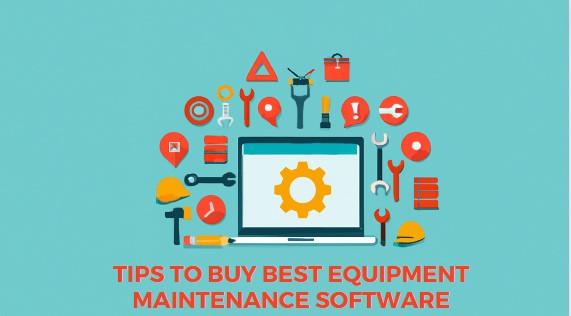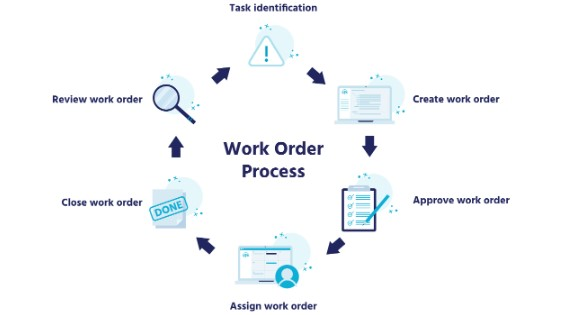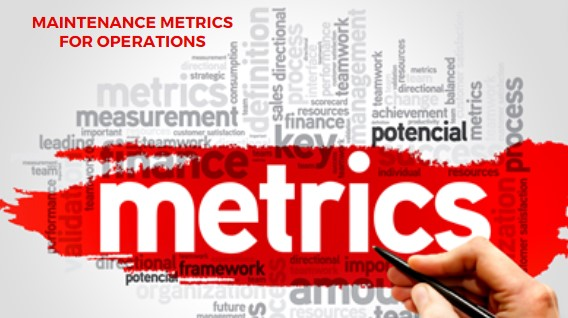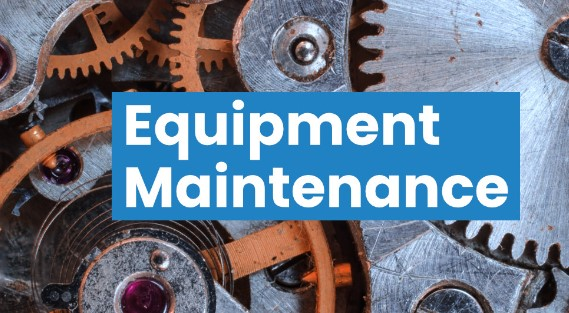
5 Tips To Buy Best Equipment Maintenance Software
Viki Dongare |
23 Feb 2024 |
06:33 AM
- What Is Equipment Maintenance Software?
- Importance of Equipment Maintenance Software
- Industries That Benefit from Equipment Maintenance Software
- Key Features of Equipment Maintenance Software
- Benefits of Using Equipment Maintenance Software
- Factors to Consider When Buying Best Equipment Maintenance Software
- Current Trends in Equipment Maintenance Software
- Implementing Your Equipment Maintenance Software
- Best Practices for Implementation and Onboarding
- Conclusion

10 Proven Ways to Reduce Downtime in Manufacturing
Madhurima Sanyal 07 Jan 2024 | 16:50 PMDiscover 10 proven strategies to reduce downtime in manufacturing, enhance efficiency, and streamline processes in 2024. Explore actionable insights and solutions....
Equipment maintenance software, also known as computerized maintenance management system (CMMS) or maintenance management software, is a powerful tool designed to streamline and optimize maintenance operations within an organization. It enables businesses to effectively manage their assets, streamline maintenance tasks, and enhance overall operational efficiency. By centralizing maintenance data and automating processes, equipment management software simplifies tasks such as inventory management, preventive maintenance scheduling, and asset tracking activities. In today's fast-paced industries, having robust maintenance management software is essential for minimizing downtime, reducing maintenance costs, and ensuring equipment reliability.
What Is Equipment Maintenance Software?
Equipment maintenance software is a specialized solution that helps organizations effectively manage and maintain their assets. It encompasses a range of functionalities, including preventive maintenance scheduling, asset management, and inventory management. At its core, the software serves as a centralized platform for tracking maintenance activities, managing work orders, and optimizing resource allocation.

By leveraging automation and data-driven insights, it empowers businesses to streamline maintenance operations, improve asset performance, and reduce downtime. From small businesses to large enterprises, organizations across various industries rely on such equipment management software to ensure the reliability and longevity of their equipment.
Importance of Equipment Maintenance Software
By providing a systematic approach to maintenance management, this software helps organizations enhance operational efficiency, reduce maintenance costs, and extend the lifespan of their assets. With features such as preventive maintenance scheduling and inventory management, asset management software enables businesses to proactively address maintenance needs, preventing costly breakdowns and downtime. Moreover, by centralizing maintenance data and facilitating real-time reporting, it empowers decision-makers to make informed choices and optimize resource allocation.
Key Features to Look For
When evaluating asset management software, it's essential to consider key features that align with your organization's needs and objectives. Some crucial features to look for include:
-
Comprehensive preventive maintenance scheduling
-
Asset management capabilities for tracking equipment lifecycle
-
Inventory management tools for efficient parts and supplies tracking
-
Maintenance task management for assigning and tracking work orders
-
Robust reporting and analytics for data-driven decision-making
-
Integration capabilities with other business systems for seamless operations
-
User-friendly interface and mobile accessibility for enhanced usability
Industries That Benefit from Equipment Maintenance Software
Equipment maintenance software is indispensable across various industries, revolutionizing maintenance practices and enhancing operational efficiency.
Construction - Maintenance software enables construction firms to schedule regular equipment inspections, track maintenance tasks, and optimize resource utilization, ensuring smooth project execution and minimizing downtime.
Agriculture - From tractors to harvesters, agricultural equipment plays a vital role in farm operations. With maintenance software, farmers can streamline preventive maintenance tasks, track asset performance, and manage inventory effectively. By proactively addressing equipment issues, farmers can increase productivity and minimize disruptions during critical planting and harvesting seasons.
Energy, Oil, and Gas Industries - Maintenance software empowers energy companies to implement proactive maintenance strategies, track asset health in real-time, and manage maintenance requests efficiently. By minimizing unplanned downtime and optimizing asset performance, energy firms can enhance operational resilience and drive sustainable growth.
Key Features of Equipment Maintenance Software
Equipment maintenance software offers a range of features designed to streamline maintenance processes and optimize asset management software.
Maintenance Work Orders

Maintenance work orders allow organizations to efficiently manage maintenance tasks from initiation to completion. With this feature, maintenance teams can create, assign, and track work orders for preventive maintenance tasks, repairs, and inspections. Work orders include detailed information such as task description, priority level, assigned technician, and completion status, ensuring transparent communication and accountability.
Maintenance Scheduling
Maintenance scheduling functionality enables organizations to plan and schedule maintenance activities in advance. By creating recurring schedules for preventive maintenance tasks and inspections, maintenance teams can ensure that equipment is serviced at optimal intervals, reducing the risk of unplanned downtime and extending asset lifespan. Maintenance scheduling also allows for efficient allocation of resources and minimizes disruptions to operations.
Maintenance Notifications
Maintenance notifications are essential for keeping stakeholders informed about maintenance activities and upcoming tasks. The software sends automated notifications and alerts to relevant personnel, notifying them of scheduled maintenance, pending work orders, or critical equipment issues. These notifications can be delivered via email, SMS, or within the software platform, ensuring timely communication and enabling proactive response to maintenance needs.
Benefits of Using Equipment Maintenance Software
Enhanced Efficiency and Productivity - Equipment maintenance software streamlines maintenance processes by automating repetitive tasks, such as scheduling preventive maintenance and generating work orders. This automation reduces manual effort and administrative overhead, allowing maintenance teams to focus on more critical tasks.
Improved Asset Performance and Lifespan - By implementing a preventive maintenance program through right software solutions, organizations can proactively address equipment issues before they escalate into costly breakdowns. Regular inspections, maintenance tasks, and timely repairs ensure that equipment operates at peak performance levels, minimizing downtime and extending asset lifespan.

Streamlined Maintenance Processes - Best equipment maintenance software provides a centralized platform for managing all aspects of maintenance operations, from work order creation to asset tracking. With features such as CMMS (Computerized Maintenance Management Systems) and integration with enterprise resource planning (ERP) systems, organizations can streamline their maintenance processes and achieve greater visibility and control over their assets.
Reduction of Maintenance Costs - By scheduling preventive maintenance tasks and addressing equipment issues before they escalate, organizations can minimize downtime, extend asset lifespan, and reduce the need for costly repairs.
Improved Employee Safety - By ensuring that equipment is properly maintained and in optimal working condition, the software reduces the risk of accidents and injuries in the workplace. It can also track safety-related maintenance tasks and provide alerts for overdue inspections or repairs, helping organizations maintain compliance with safety regulations and standards.

Centralized maintenance data - One of the key benefits of the software is its ability to centralize maintenance data. Instead of relying on disparate systems or manual records, maintenance teams can access all relevant information, such as equipment history, maintenance schedules, and work orders, in one place. This centralization helps in data driven decisions, facilitates collaboration among maintenance team, and enhances overall efficiency.
Factors to Consider When Buying Best Equipment Maintenance Software
When purchasing asset maintenance software, several key factors should be taken into account to ensure you're selecting the best CMMS software for your organization's needs:
Cost Analysis and Budget Considerations
Before investing in maintenance software, conduct a thorough cost analysis to understand the total cost of ownership, including initial implementation costs and ongoing maintenance fees. Consider your budget constraints and evaluate the ROI potential of the software based on reduced downtime and increased productivity.
Customization and Scalability
Look for software options that offers customization options to tailor your business needs. Also, consider the scalability of the software to accommodate future growth and expansion. A scalable CMMS solution ensures that your investment will continue to meet your needs as your business evolves.
User-Friendliness and Training Support

Choose a solution that is user-friendly and intuitive to ensure widespread adoption among maintenance teams. Look for software solutions that offer comprehensive training and support resources, including online tutorials and documentation. A well-supported CMMS system will empower your team to leverage the software effectively and maximize its benefits.
Evaluate other solutions in the market and compare key factors such as features, reliability, and customer support. Consider factors such as energy consumption and sustainability initiatives when selecting the best CMMS software for your organization. Additionally, explore condition monitoring capabilities to proactively identify equipment issues and reduce unplanned downtime.
Current Trends in Equipment Maintenance Software
As technology continues to evolve, equipment maintenance software undergoes constant innovation to meet the evolving needs of organizations. Here are some current trends shaping the landscape of maintenance software:
Emerging Technologies and Innovations
The integration of emerging technologies such as artificial intelligence (AI), machine learning, and augmented reality (AR) is transforming maintenance practices. AI-powered predictive analytics enables organizations to anticipate equipment failures and schedule maintenance proactively, reducing unplanned downtime and improving productivity. AR technology enhances technician training and troubleshooting by providing interactive visual guidance.
Integration with IoT and Predictive Maintenance
The Internet of Things (IoT) plays a crucial role in enabling predictive maintenance strategies. By connecting equipment and sensors to the internet, organizations can collect real-time data on asset health and performance. Maintenance software integrates with IoT platforms to analyze this data and predict potential failures before they occur. This predictive approach to maintenance minimizes downtime, optimizes asset performance, and reduces energy consumption.
Implementing Your Equipment Maintenance Software

Implementing CMMS systems require careful planning and execution to ensure successful adoption and integration within your organization. Here are some best practices to consider:
Best Practices for Implementation and Onboarding
Start by defining clear objectives and goals for the implementation process. Develop a detailed implementation plan that outlines tasks, timelines, and responsibilities. Provide comprehensive training to users and stakeholders to ensure they understand how to use the software effectively. Regularly communicate updates and progress throughout the implementation process to keep everyone informed and engaged.
Ensuring User Adoption and Integration with Existing Systems
Encourage user adoption by highlighting the benefits of CMMS and addressing any concerns or resistance to change. Provide ongoing support and assistance to users as they transition to the new system. Ensure seamless integration with existing systems, such as enterprise asset management systems, to maximize efficiency and data accuracy. Monitor user feedback and performance metrics to identify areas for improvement and refinement.
Conclusion
The process of selecting the best equipment maintenance software involves careful consideration of various factors to ensure that the chosen solution aligns with the organization's needs and objectives. By prioritizing key elements such as reducing unplanned downtime, increasing productivity, and optimizing energy consumption, maintenance managers can make informed decisions that positively impact their operations.
It's crucial to thoroughly evaluate many software solutions, taking into account factors such as cost, customization options, and user-friendliness. Additionally, staying informed about current trends in equipment maintenance software, including emerging technologies and integration with IoT and predictive maintenance, can provide organizations with a competitive edge and help them stay ahead of the curve.
Implementation and onboarding are critical phases in the adoption of maintenance system. By following best practices for implementation and ensuring seamless integration with existing systems, organizations can facilitate a smooth transition and maximize user adoption. Providing comprehensive training and ongoing support to users is essential for realizing the full potential of the software and driving long-term success.

Ultimately, the successful implementation of equipment maintenance software can lead to significant improvements in operational efficiency, asset performance, and overall business outcomes. By streamlining maintenance processes, organizations can reduce downtime, increase productivity, and achieve cost savings. Moreover, by harnessing the power of data analytics, businesses can proactively identify and address facility management and maintenance issues before they escalate, further enhancing operational resilience and equipment performance.